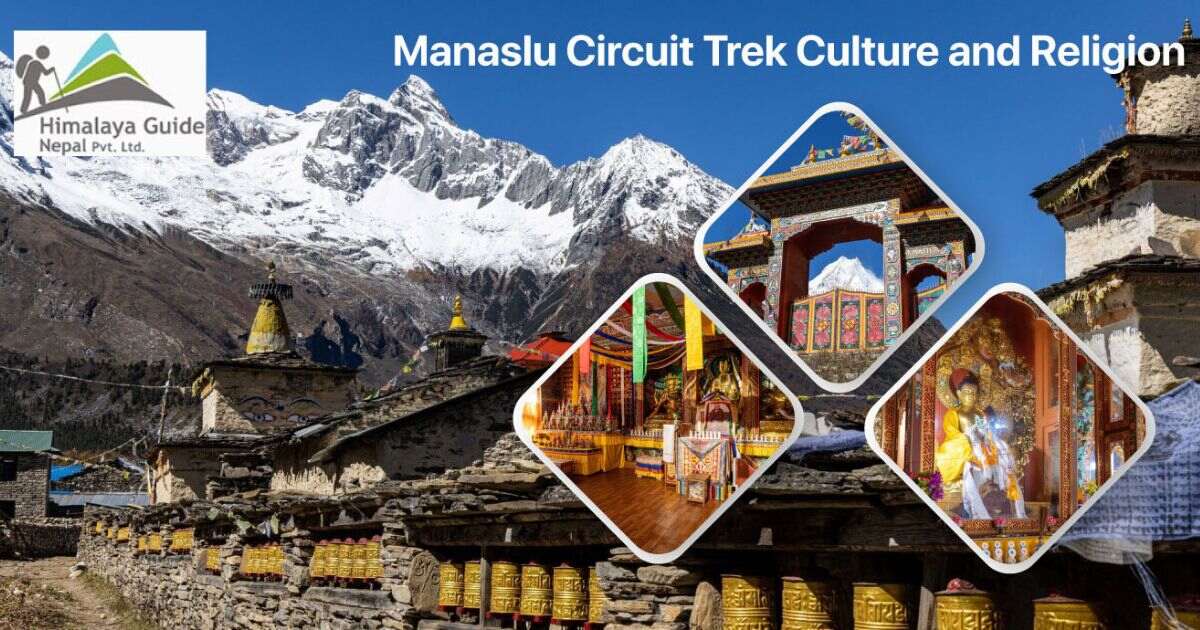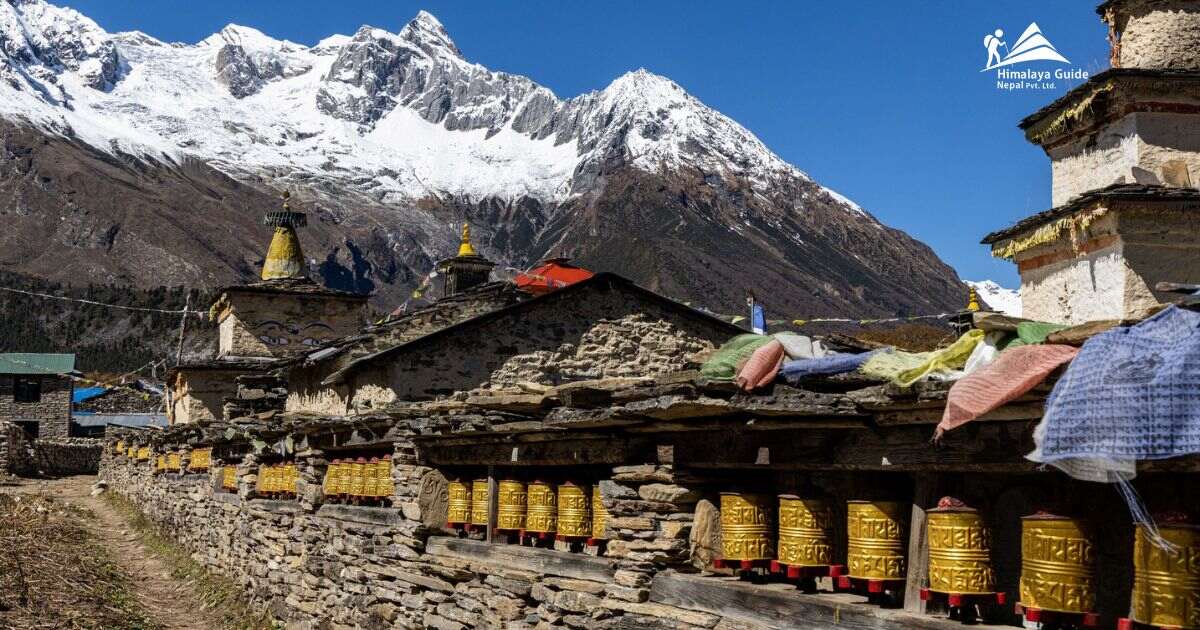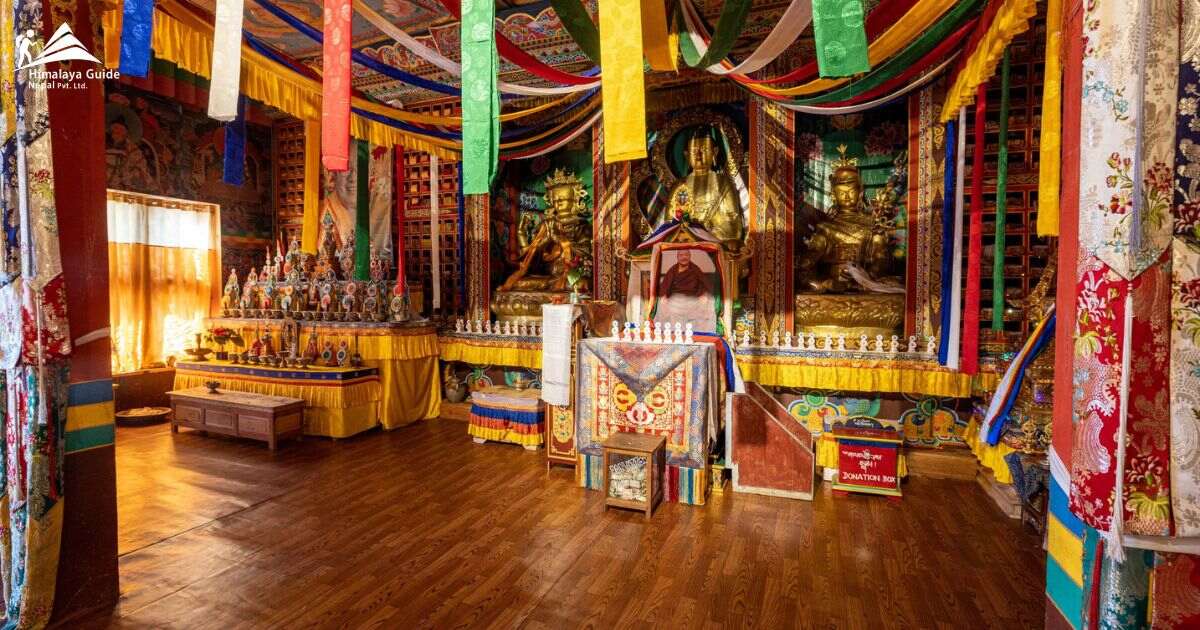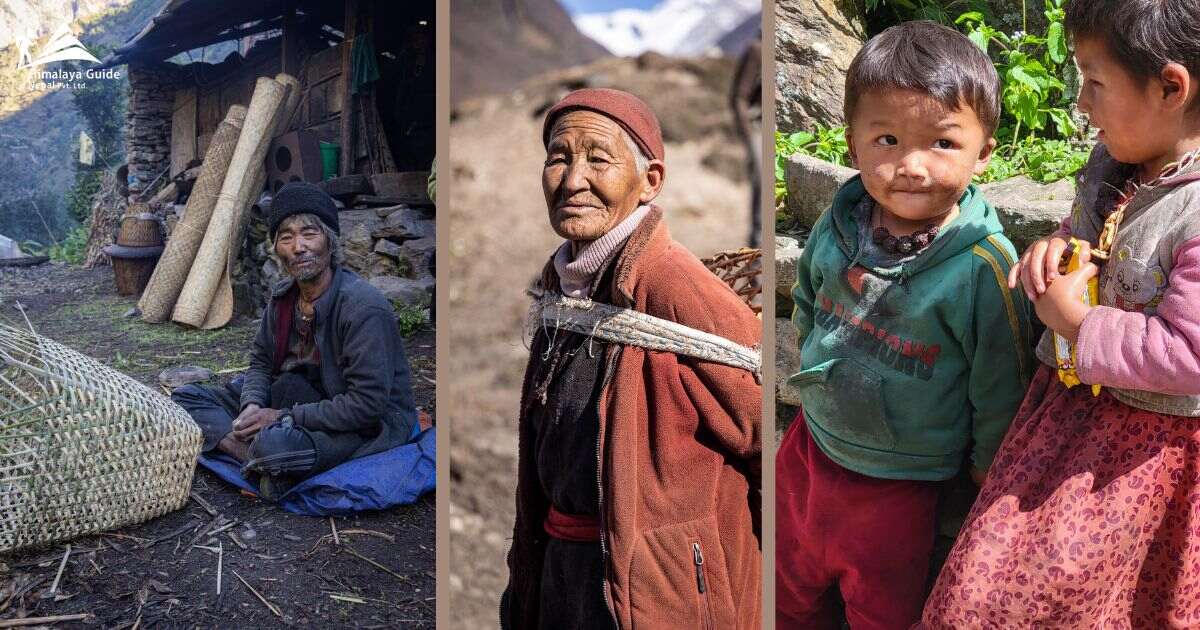Manaslu Circuit Trek Culture And Religion

28 Mar 2023 Chandra Gurung
The Manaslu circle trek is a well-known hiking route in Nepal’s Manaslu region. Visitors can learn about the regional people’s traditions, culture and religion thanks to their rich cultural and religious legacy. Throughout this trek, you will explore the beautiful Manaslu region, including Barpak Village, the earthquake’s epicenter. Due to the gorgeous rural hilly landscape, terraced farmlands, charming villages, and spectacular Himalayan views, this tour is surreal.
For instance, you will pass a lot of rivers, waterfalls, and historical sites on the trip. You will come across Brahmins, Chhetris, Sudras, Baisyas, Gurungs, Magars, Rais, Tibetans, and other communities along the trail, rich in multiethnic diversity. This trek provides a beautiful opportunity to learn about the distinctive traditions, culture and religion of the Himalayan and hill tribes.
Overview
The Manaslu region of Nepal has a thriving cultural diversity impacted by its geography. The area primarily encloses Nepal’s northern and north-central borders and comprises two significant hilly regions and a Tibetan mountain region. Chhetri, Brahmin, and Thakali communities, among others, reside in the region’s southern hills. The Gurungs, who comprise most of the population, live primarily in the central hills. The Gurkha army has a large Gurung population. Similar to the Sherpas in ethnicity, the Bhutias are Tibetans who live closer to Tibet and follow Buddhism. The area has strict monasteries, Chortens, Mani walls, and other Buddhist temples.
Introduction
Nepal’s Manaslu region and culture is popular for the variety of its tradition, customs, culture and religion. The Gurung and Tibetan ethnic groups, who practice a hybrid of Buddhism and Hinduism, make up the majority of the population in the Manaslu region. While they journey around the area, tourists can watch their daily activities, habits, and practices.
Similarly, in the lower hills of the Manaslu circuit trek, Hinduism is the dominant religion, and local shrines and temples are common along the trail. Festivals such as Lhosar are celebrated with great enthusiasm, showcasing the rich traditions of the locals. The region is home to people who speak various languages, including Nepali, Nepal Bhasa, Nubri, Tsum, and other Sino-Tibetan languages. Agriculture and animal husbandry are the primary occupations, with crops like barley and maize and fruits like oats and nuts being grown. In addition, the lodge and tea house business provides a significant source of income, especially during peak tourist season.
Culture And Religion
The Manaslu area provides a window into the inhabitants’ way of life, largely farmers and traders. One of the Manaslu Circuit Trek‘s top cultural draws is the chance to stop at the historic Buddhist monasteries and shrines along the journey. The most prominent are the monasteries in the Sama and Samdo villages, where guests can observe the local monks performing Buddhist ceremonies and practices. Visitors may see how the locals still cultivate their land, including planting and harvesting crops and their homes’ distinctive architectural features.

Similarly, the Manaslu region may find a remarkable fusion of culture and religion. There are many different ethnic groups in the area, and each has its distinctive traditions and customs. The trip passes through towns with significant local shrines and temples, providing a window into the spiritual practices of the inhabitants. Festivals like Lhosar serve as a platform to highlight the populace’s traditions, culture and religion.
Religion And Festival
Manaslu’s main religion is Buddhism, and the area is full of stunning monasteries that draw tourists from all over. Most people in Manaslu practice Buddhism and pilgrims congregate at the local monasteries. The gompas or monasteries in the area are rich in cultural significance and tradition.
Famous Gumbas of Manaslu
Some of the most significant gompas are as follows:
- Mu Gumba (3510m),
- Gumba Lungdung,
- Rachen Gumba,
- Sarang Gumba
Several monasteries display the art and way of life. However, residents of the lower hills also practice Hinduism, and the region is home to numerous local temples and shrines.

Main Festival
The locals of Manaslu observe the festivals as a display of their rich culture and religion. Celebrations like Lhosar allow tourists to see regional dances and costumes performed traditionally.
1. Lhosar
Lhosar is a major annual celebration in Nepal celebrated by the Tamang, Gurung, and Sherpa people. The letters “Lo” and “star,” which together make up the word “Lhosar,” stand for new and year, respectively. Each community celebrates its Lhosar on a different day as the event ushers in the new year for various ethnic groupings.
- The Gurung people celebrate Tamu Losar.
Family members and other relatives come together to commemorate the event in January of the Gregorian calendar. They enjoy eating traditional foods and drinking homemade liquor, and cultural activities are planned. We can see Buddhist shrines and people dressed traditionally to celebrate this festival.
- Tamang people celebrate Sonam Lhosar
They perform the Selo, a traditional dance, and play the Damphu, a traditional musical instrument, to mark the occasion. Sonam Lhosar falls in January or February of the Gregorian calendar. They also clean and decorate their homes and visit monasteries for prayer and flag-hanging. Tamang people believe that the festivities ward off negative energies and offer encouragement.
- Sherpa people celebrate Gyalpo Lhosar.
Gaylpo Lhosar falls in February or March of the Gregorian calendar. During the celebration, Sherpa people cook traditional foods like Guthunk and Chhyang (Tibetan beer) dumplings. Families prepare different foods for eating and give special attention to the kitchen during this celebration.
2. Tsum Shagya Centennial Festival
The 100th anniversary of the nonviolent tradition in the Tsum Valley took place at the Tsum Shagya Centennial Festival. This tradition was first practiced in upper Tsum Valley in 1920 when the locals vowed to preserve their land as a “non-sacrificing place.” They strictly adhered to the law, which prohibited killing, hunting, honey hunting, and setting forest fires. The Rachen Gompa monastery lit 1000 candles as punishment for breaking these laws. Drukpa Rinpoche Lama Serab Dorje developed this tradition of nonviolence, and it is still practiced today.
3. Mani Rimdu Festival
Mani Rimdu festival is celebrated and hosted by the region’s Sherpa community. Live dance performances and reciting blessings and prayers are also part of the festival. Tourists can also see several religious festivals and ceremonies along the journey.
People And Ethnicity
A large and diversified population of people, largely of the Gurung ethnic group, live in the Manaslu region of Nepal. In the sixth century, the Gurung people moved from Tibet to Nepal. They later converted to Tibetan Buddhism; however, they continued to practice some Animistic ceremonies.
The Manaslu region has a diverse population, with the Gurung as the majority ethnic group. The Tsum and Nubri ethnic groups are also well-represented in the area, and each has distinctive rituals and beliefs. Rice is the predominant meal in the area, and the Gurung people also have unique traditional foods, such as Mohi Chop and Sukuti.
People of Manaslu
People of many ethnicities, including Chettri, Brahmin, Magar, and Newar, reside in the lower hills, but Tibeto-Burmans, Indo-Aryans, and Mongoloids coexist in the upper highlands. In the Manaslu area, there are also members of the ethnic tribes Nubri and Tsum. The Nubri people, who originated in Tibet 400 years ago, practice Buddhism and Animism. They number roughly 2000 people and reside in the Nubra Valley. Similarly, the Tsum ethnic group has about 4000 members in the Tsum Valley and is of Tibetan descent. They follow both Buddhism and the Bonpo faith.

The mountain and hilly regions are the two basic categories into which the area can be divided. You will encounter people mainly of Chettri, Brahmin, and Magar ethnic groups at the beginning of the trail going to the upper Manaslu route. Indo-Aryans from the south, Tibeto-Burmans, and Mongoloids from the north can all be found in the upper regions. The region is also home to the Nubri and Tsum ethnic groups, divided by the Chikkur river. Tsum was isolated until the 1990s, keeping its genuine culture, religion, art, and tradition, while Nubri has been available to tourists since 1950.
Conclusion
In conclusion, the Manaslu circuit trek offers tourists a unique cultural and religious experience, giving them a window into the locals’ customs and way of life. Hence, the Manaslu region of Nepal is rich in religious traditions and diversified in terms of culture and religion. People who practice Buddhism and Hinduism live in the area, and tourists can see many stunning monasteries, shrines, and temples when touring the area.
Several languages, including Nepali, Nepal Bhasa, Nubri, Tsum, and other Sino-Tibetan dialects, are spoken in the Manaslu region. The area’s residents primarily work in agricultural and animal husbandry, with the lodge and tea house industries providing a significant source of revenue during the height of the tourist season. Overall, the Manaslu Circuit Trek is a fantastic way to experience the area’s vibrant spirituality, culture and religion.
